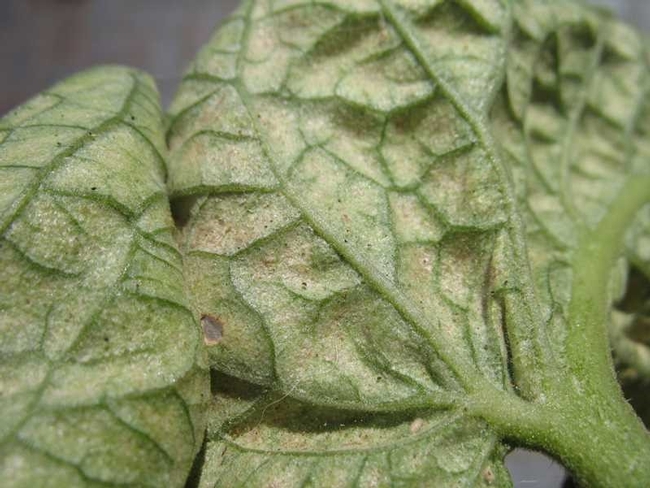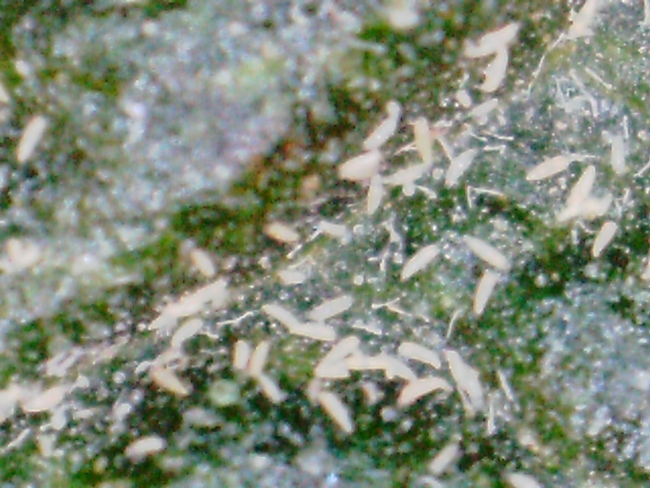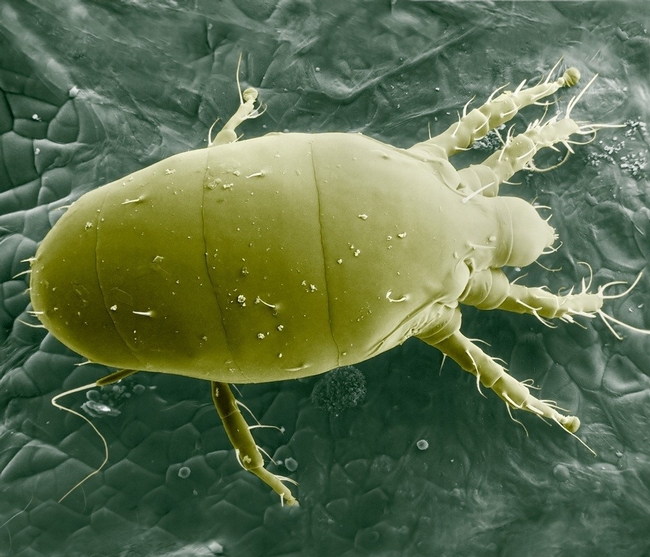Russet Mites on Tomatoes
Damage to Tomato leaves
Russet mites are most frequently found in outdoor container plantings. This suggests that they're introduced both in potting soils and plants brought into the garden. Use only dependable, high-quality potting medium and plants from a nursery you trust. Don't be afraid to ask if mites have been a problem. Even if they've been dealt with and the plant shows no signs of damage, eggs may still exist in the soil.
Introducing beneficial nematodes just as soil temperatures begin to warm and ahead of planting can help destroy eggs that are in the soil and nymphs once they hatch. Apply a second round of vermiculite-carried nematodes if damage to lowest leaves is spotted.
Avoid over-fertilizing plants. Mites are attracted to vigorous green growth that comes of too much nitrogen.
Periodic releases of predatory mites can blunt infestations, giving you time to deal with them. (Yes, the same spray mentioned below will also kill beneficial mites.)
Because of their near invisibility, it's difficult to apply insecticidal soaps to suspected mite infestations. Home-made sprays using garlic, hot peppers, or citrus oils will not usually take down mites but may provide some deterrent. (Because they often arrive in the wind, russet-hemp mites aren't easily deterred.)
Neem oil will repel and kill mites. It should be applied at first signs of damage.
Pyrethrum sprays have proven effective in killing mites but require complete coverage to ensure that none of the microscopic pests are overlooked. Tailor applications to the lifecycle of the mite. Spraying once a week — once every five days in warm conditions — for three to four weeks should cover adults, emerging nymphs, and eggs.
No matter which method you're using, close inspection of plants during treatment is crucial. Use a lens of 14X magnification or larger to see mites gathered at the center of curled leaves, at stem junctures, or in flowers. Don't wait to see how effective one treatment is before continuing or using another. Once infestations spread up plants, it's almost impossible to save the plant.
Don't hesitate to discard entire plants, even if they're not entirely affected. While you're treating affected plants, the mites are hurriedly spreading to others.
Prevent spreading mites. Discard infested plants in plastic bags and dispose of them in sealed garbage containers.
Release Predatory Mites (Phytoseiulus persimilis)





Posted by Ron Lane on May 18, 2020 at 6:58 PM